- News
- Reviews
- Bikes
- Components
- Bar tape & grips
- Bottom brackets
- Brake & gear cables
- Brake & STI levers
- Brake pads & spares
- Brakes
- Cassettes & freewheels
- Chains
- Chainsets & chainrings
- Derailleurs - front
- Derailleurs - rear
- Forks
- Gear levers & shifters
- Groupsets
- Handlebars & extensions
- Headsets
- Hubs
- Inner tubes
- Pedals
- Quick releases & skewers
- Saddles
- Seatposts
- Stems
- Wheels
- Tyres
- Tubeless valves
- Accessories
- Accessories - misc
- Computer mounts
- Bags
- Bar ends
- Bike bags & cases
- Bottle cages
- Bottles
- Cameras
- Car racks
- Child seats
- Computers
- Glasses
- GPS units
- Helmets
- Lights - front
- Lights - rear
- Lights - sets
- Locks
- Mirrors
- Mudguards
- Racks
- Pumps & CO2 inflators
- Puncture kits
- Reflectives
- Smart watches
- Stands and racks
- Trailers
- Clothing
- Health, fitness and nutrition
- Tools and workshop
- Miscellaneous
- Buyers Guides
- Features
- Forum
- Recommends
- Podcast
 2022 Saris M2 Smart Trainer.jpg
2022 Saris M2 Smart Trainer.jpg£499.99
VERDICT:
Accurate wheel-on smart trainer that's good value if you shop around
Decent power numbers
Easy to fold up
Expensive at RRP
Noisy
Weight:
11,000g
Contact:
At road.cc every product is thoroughly tested for as long as it takes to get a proper insight into how well it works. Our reviewers are experienced cyclists that we trust to be objective. While we strive to ensure that opinions expressed are backed up by facts, reviews are by their nature an informed opinion, not a definitive verdict. We don't intentionally try to break anything (except locks) but we do try to look for weak points in any design. The overall score is not just an average of the other scores: it reflects both a product's function and value – with value determined by how a product compares with items of similar spec, quality, and price.
What the road.cc scores meanGood scores are more common than bad, because fortunately good products are more common than bad.
- Exceptional
- Excellent
- Very Good
- Good
- Quite good
- Average
- Not so good
- Poor
- Bad
- Appalling
The Saris M2 is a good way to get into smart training. It's a bit hard to score as the RRP doesn't really bear any relation to what it costs out in the real world, but assuming you're buying one for the £200 it'll actually cost, and not the £500 Saris suggests you should pay, it's a cheap first step and one that'll last you a good while.
The M2 uses the same steel frame as the venerable Fluid 2 trainer, with folding legs and a three-position axle mount designed to firmly hold the supplied quick release. One of the three positions is for a 120mm axle, which went out of fashion around the time bikes were getting a sixth sprocket, so this frame has been around a while. If it ain't broke, and all that...
Anyway, the locking system is simple and effective, and if your bike has one of those new-fangled 'through axles' then those work fine too; you'll need an adapter, though, and that doesn't come with the trainer. The frame has levelling feet to keep your bike level on wonky floors.
It's a sturdy thing, and is stable even when you're throwing down a big-Wattage sprint. It's easy to fold up too, if you don't have a space for a full-time training setup.
The M2 also gets the turbofan flywheel and roller of the Fluid 2, but in place of the sealed fluid resistance unit is the M2 smart unit, which Saris claims is capable of +/- 5% accuracy and a maximum resistance of 1,500W and 15% grade simulation.
It can communicate with training apps over Bluetooth and ANT+ FE-C, and all the major apps are supported. Power is transferred via a steel roller, which you bring into contact with the rear tyre using a simple hand screw.
Wheel-on trainers have advantages and disadvantages. On the plus side you don't have to faff around taking your rear wheel off and inevitably re-indexing your gears. They're smaller and lighter too, and (generally) cheaper. On the other hand they make quite a lot more noise, and as well as being noisier the sound is less pleasant; the M2 is quite whiny, and I've been told in no uncertain terms it's 'not an early morning turbo'.
You'll also wear through your rear tyre. Saris recommends a trainer tyre, which is ok if you've got a spare trainer wheel, but then you're into taking wheels off again. Luckily I have a dedicated turbo bike with a salted-up headset, one working shifter and no brakes, so I'm all good.
The head of the tyre contact screw has a slip-torque system that's supposed to click when you reach the correct tyre-roller force, but for me it didn't do that until the roller was wound in really tight, meaning a lot of resistance and much too much tyre deformation for my liking. Even at half the number of turns from first contact to the recommended setting there was enough contact for the tyre to never slip even in a full-gas sprint.
Whether you go with the Saris-sanctioned setting or a certain number of turns that suits you, you'll need to calibrate the trainer. This is done via the Saris app, which is refreshingly free of setup. You don't have to log in, or give it your phone number or date of birth: it looks for your trainer, and then you connect your trainer, and you do a spin-down to calibrate your trainer. And then you can get on with your life. Other trainer app makers take note.
Once you're up and running, the M2 has a solid feel. It doesn't have the heaviest flywheel, so you don't get quite the same amount of inertia smoothing out the ride as you do with more expensive direct drive trainers, but it it's still a pleasant experience once you've stuck some tunes on to drown out the noise.
The lack of heft in the flywheel is most noticeable when the trainer is trying to apply big resistance at low speed, so if you like to have your trainer realism set high on Zwift and winch yourself up the big climbs in a low gear, you'll find the M2 pretty choppy, and harder work than if you're getting the system spinning a bit more quickly.
If you're pairing the M2 with an app such as Zwift then you'll find that the resistance changes in response to gradient are handled pretty well. They're maybe not as swift as top-of-the-range units, so you might find the trainer response lagging behind slightly in bits of the Zwift map – the esses, for example – where there are a number of rapid changes from uphill to downhill. But generally speaking, it's good.
The M2 claims to read power accurate to +/- 5% when calibrated, and a ramp test is a decent way to get a feel for whether a trainer's spitting out believable numbers. So after warming the trainer up for fifteen minutes round Watopia and giving it a nice fresh calibration, I hopped onto Zwift for what normally turns out to be about 27 minutes of pain. Well, 22 minutes of thinking, 'maybe it won't be so bad this time', and then five minutes where it's exactly as bad as every other time. And the number it spat out was 302W, an entirely believable FTP for me.
This is on the one hand a good thing, as it means the trainer calibration does its job, and on the other hand it's a bad thing because I can't go out and smash some C races with wildly optimistic numbers (more on that later). Bah.
Here's the graph for the ramp test, plotted against my Garmin Vector 2 pedals. The immediately obvious thing is that the pedals start off reading low – significantly low – and end up reading just a bit high, compared to the M2.
Here's the lowest interval, at 120W. The pedals are reading under 100W, so we're talking a 20% difference or more between the two.
At the other end of the scale, 400W was the maximum increment I managed to complete, and the pedals were reading about 2% above that, 408W; that's really an insignificant difference given the stated accuracies of both units.
In the middle the two agree, and the point at which they do that is right around my FTP at 300W. So if we assume the Vector pedals are putting out believable numbers – and I've used them to benchmark a lot of things, so I'm reasonably confident in them – then the M2 is most accurate at 250-350W, and looks like it's under-reporting a bit here at higher power. And it's quite a long way off for low-intensity stuff.
Here's another interval session, a 15-minute power benchmarking one that I use a lot for trainers. This one's good because it shows up some other slight idiosyncrasies of the M2's power reporting. Overall, as you can see, it's pretty good. But you'll notice that sometimes the M2 is reading higher, and sometimes the pedals.
On this interval (325W) the trainer reads low against the pedals. For this one, I'm standing, and riding at a low cadence (around 60rpm). Later on there's a harder effort (450W) where I'm seated and using a high cadence of around 100rpm.
For that one, you can see that the trainer is over-reporting compared to the pedals. It does seem to be that the faster the trainer is spinning, the more it does that. It also over-reported in the sprints, which are completed standing but the trainer's spinning fast, so that trainer speed seems to be more the deciding factor.
Again, for steady state stuff in the FTP and sub-FTP range the M2 was very accurate, as can be seen in the data for the warm-up ramp (225W - 295W).
Lastly here's a 10-lap race on the La Guardia Loop in Zwift, where I came a creditable third in the Cs. As you can see the Saris does a good job when it's not in ERG mode, tracking the pedals well across the whole race. The discrepancy between the two is well within the +/- 5% that Saris is claiming for the resistance unit.
Dive in a bit closer and you can see some of the same trends as we saw in earlier graphs: once the power drops below about 200W the M2 is under-reporting quite a bit, which is making those recovery sections between the short-climb efforts just a bit easier than they would otherwise be. Maybe that's why I managed third place. Otherwise the two lines are closer, with the M2 slightly on top most of the time.
The sprint at the end is interesting, in that it appears to show how the trainer's power reporting is affected when you're in and out of the saddle. You can see the point where I sit down and try (and fail) to keep the power on all the way to the line. The interface between the tyre and roller is constant – this isn't like some trainers where your weight makes the contact – so it must be to do with how the M2 interprets choppier sprint power compared to smoother seated power.
Overall, it's pretty good. It's a bit generous at low power, but through the sweet spot where most people will be training the numbers match pretty well to a direct measurement power meter. Obviously with a wheel-on trainer like this you need to be careful if you want things repeatable; if the tyre pressure changes, or you wind the roller onto the wheel a bit harder, it will have a significant impact on the numbers. It's worth doing a spindown at any point where you need the trainer to be giving you accurate numbers. Luckily the app makes that very easy.
Cadence reporting is algorithmic; there's no specific sensor. Overall the M2 does a reasonable job as you can see here:
For the most part the cadence is reported reasonably accurately, and it's only really when you're actually trying to make it stop working that it actually does. If we zoom into this bit:
You can see that the M2 doesn't cope especially well with sudden changes in cadence, lagging behind the pedals (which obviously are measuring it directly) and sometimes not catching up at all. But for pretty much everything the cadence numbers are going to be fine.
I said earlier that 'I can't go out and smash some C races with wildly optimistic numbers' with this trainer, but actually that's not true. It's easy! First wind the roller in to the click, then do a spindown calibration with that heavy pressure on the tyre. Next, wind the the roller out so it's pressing against the roller much more lightly.
And hey presto! Your power numbers will be artificially inflated by (checks notes) about 250%. Making a hard category C race into a gentle zone 1 bimble. I'm not saying you should do that. But hey, you can. I was a good boy and didn't finish the race. Although I probably did still mess it up a bit.
Value
Okay, on to the thorny question of value: it's thorny because the RRP of this trainer doesn't reflect what you'll actually pay, should you go out and buy one right now.
If you asked me, 'Should I buy this trainer for the full retail price of £500?' then the answer would be no: the excellent Zwift Hub trainer is cheaper than that. And that's direct drive, less noisy, more accurate and has a better road feel. So in a head to head, it's out in front.
But the market has already adjusted for that, it would seem, and in many places online you can pick up an M2 for £200 or less; I've seen them as low as £170. For that kind of money it's a fantastic entry into smart training, and very easy to recommend.
If we're recommending it at not-RRP then it's only fair to compare it with the discounted prices of other trainers, but it's still cheaper. The Wahoo KICKR SNAP, which is probably the most directly-comparable trainer out there as a wheel-on smart trainer, can't currently be had for less than £299.99.
The Tacx Flow Smart, also comparable, retails for £300 and isn't generally discounted much. Pinnacle's HC direct drive trainer will again cost you about £300 online.
You're not currently going to get a Zwift Hub, Elite Suito or Tacx Flux S for less than £450, so the step up in ride quality and accuracy comes at a premium.
Overall
This is easy to set up, calibration is simple, and the numbers are fairly accurate. If you can find it for around £200 – and you generally can, despite the far higher RRP – it's a good intro into smart training.
Verdict
Accurate wheel-on smart trainer that's good value if you shop around
road.cc test report
Make and model: Saris M2 Smart Trainer
Size tested: One Size
Tell us what the product is for and who it's aimed at. What do the manufacturers say about it? How does that compare to your own feelings about it?
Saris says: "Whether you want to attend a group ride in Zwift, climb the Dolomites in ROUVY or simply need a sweat session, the M2 smart trainer can get you there. All you need is your bike, the M2, your favorite indoor cycling app and device of choice.
"This do-it-all, smart bike trainer is capable of replicating any workout thrown its way, up to 1500 watts and a 15% climbing grade. Simply connect to your indoor cycling application of choice via integrated dual-band ANT+ FE-C and Bluetooth, and let the M2's electromagnetic response system do the rest. And thanks to integrated speed, cadence and power data, you can track and record performance data without extra external sensors. Plus, our innovative clutch knob ensures perfect tire-to roller connection for every single ride."
Tell us some more about the technical aspects of the product?
Tech Specs:
Noise level: 69 decibels at 20 mph
Power Accuracy: +/- 5%
Resistance Unit: Fast-response electromagnetic
Built-In Sensors: Speed, cadence, and power
Grade Simulation: 15%
Maximum Watts: 1500
Maximum Weight (rider and bike): 300 lb.
Design:
Wheel-On: Connects to rear wheel of bike, no need to remove wheel or disassemble bike
Trainer Frame: Foldable Classic frame with spring loaded, bolt-action lever
Resistance Knob: Clutch knob, clicks like a gas cap to indicate correct roller-to-tire tension
Roller: Alloy, precision-machined alloy resistance roller reduces tire wear and slippage
Leveling Feet: Yes, for easy adjustment on uneven surfaces
Thru Axle Adapter: Sold separately for 142x12mm and 148x12mm bikes
Cooling System: Internal, moves air through trainer to keep it cool
Thermal Sensors: Yes, provide accurate performance data
Connectivity:
Headless mode (powered on, not paired to any apps) lets you ride with a progressive resistance curve that matches the Fluid2
Integrated dual ANT+ FE-C and Bluetooth standards
LED indicator lights confirm connection
Compatible with a wide variety of devices and indoor cycling applications, including ROUVY, Zwift, TrainerRoad and many more. Contact us with questions about compatibility with other software
Over the air (OTA) firmware updates via Bluetooth devices
Zwift certified
Bike Compatibility:
Steel quick release skewer included for common road and mountain bike frames
Thru Axle Adapter: Sold separately for 142x12mm and 148x12mm bikes
Three settings for rear dropout spacing:
120mm
130mm
135mm
2" resistance unit roller compatible with the following wheels and tire widths:
650b
700c
27.5", up to 2.0" wide
29", up to 1.5" wide and without tread
The M2 is not compatible with the following wheel diameters and tire widths:
650c
29" with tread and/or wider than 1.5"
26"
Rate the product for quality of construction:
8/10
Rate the product for performance:
7/10
Rate the product for durability:
8/10
Rate the product for weight (if applicable)
7/10
Rate the product for value:
4/10
Tell us how the product performed overall when used for its designed purpose
It's a good wheel-on smart trainer with believable power numbers.
Tell us what you particularly liked about the product
Easy to set up, calibration is simple, and the numbers are fairly accurate.
Tell us what you particularly disliked about the product
Noisy, expensive at RRP, choppy at low speeds.
How does the price compare to that of similar products in the market, including ones recently tested on road.cc?
Therein lies the rub: at RRP it's more expensive than a Zwift Hub direct drive trainer, which is better in basically every way, and a lot more than other wheel-on smart trainers. Out in the real world of prices, it can be had for less than half of RRP, and for that kind of money it's a good option.
Did you enjoy using the product? Yes in the main
Would you consider buying the product? Yes, but not at full price
Would you recommend the product to a friend? Yes, but not at full price
Use this box to explain your overall score
Going for a seven because it's a good trainer overall, and realistically isn't going to cost you £500. If you can find it for around £200 – and you generally can – it's a good intro into smart training.
About the tester
Age: 50
I usually ride: whatever I'm testing... My best bike is: Kinesis Tripster ATR, Merida Scultura, Dward Design fixed
I've been riding for: Over 20 years I ride: Every day I would class myself as: Expert
I regularly do the following types of riding: road racing, commuting, touring, club rides, general fitness riding, fixed/singlespeed, Mountain Bike Bog Snorkelling, track
Dave is a founding father of road.cc, having previously worked on Cycling Plus and What Mountain Bike magazines back in the day. He also writes about e-bikes for our sister publication ebiketips. He's won three mountain bike bog snorkelling World Championships, and races at the back of the third cats.






























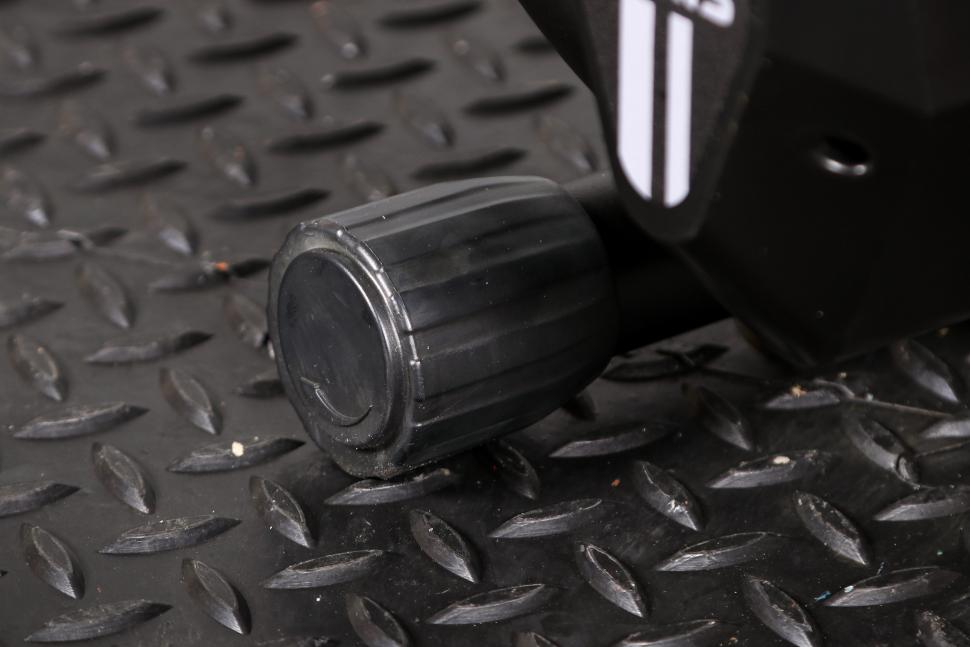


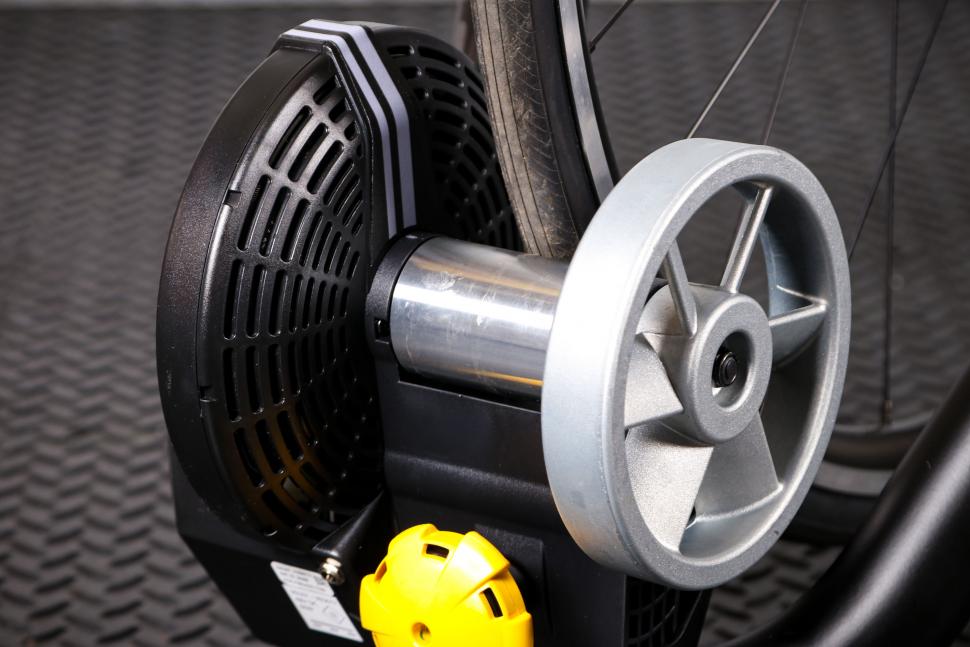

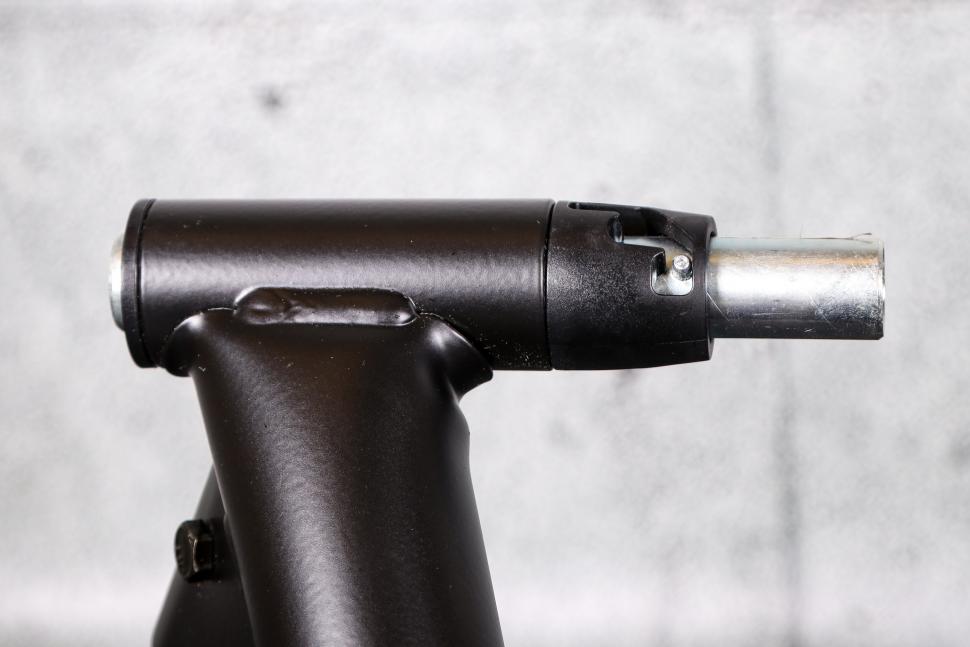
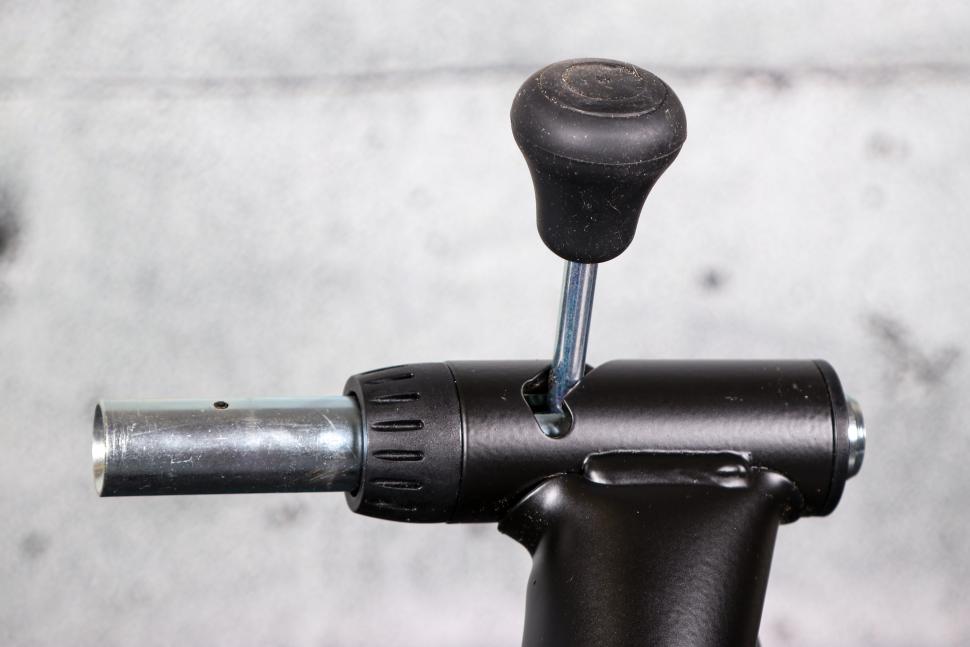

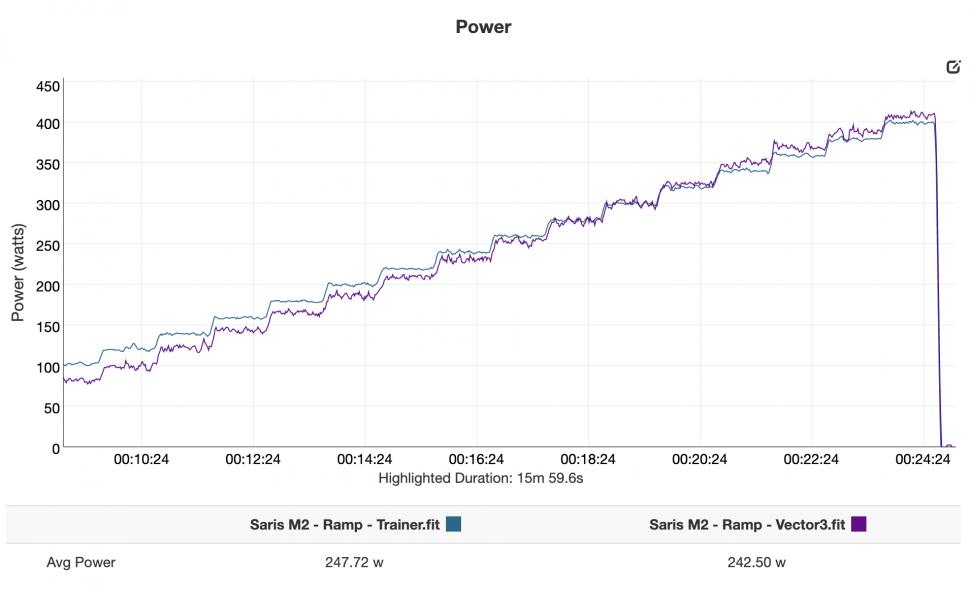

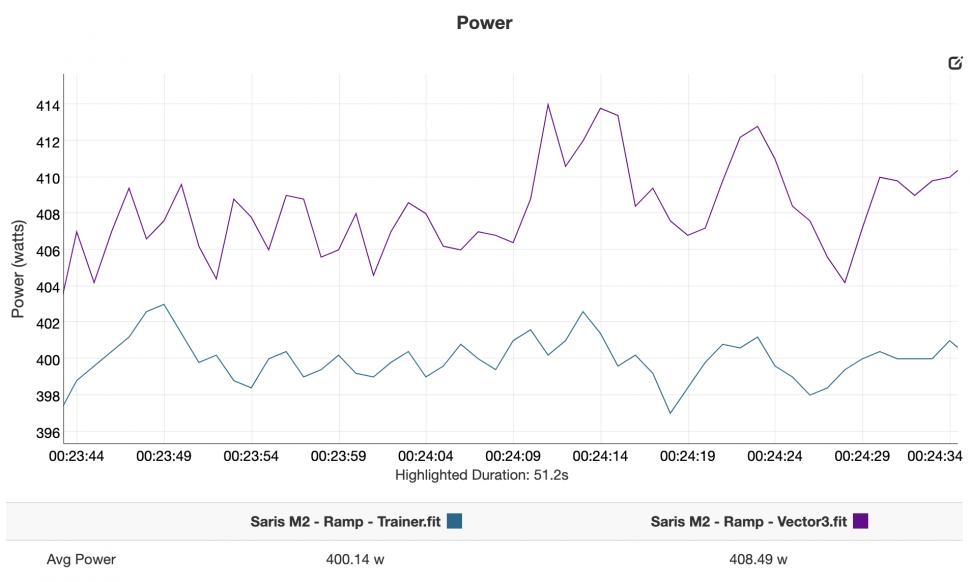
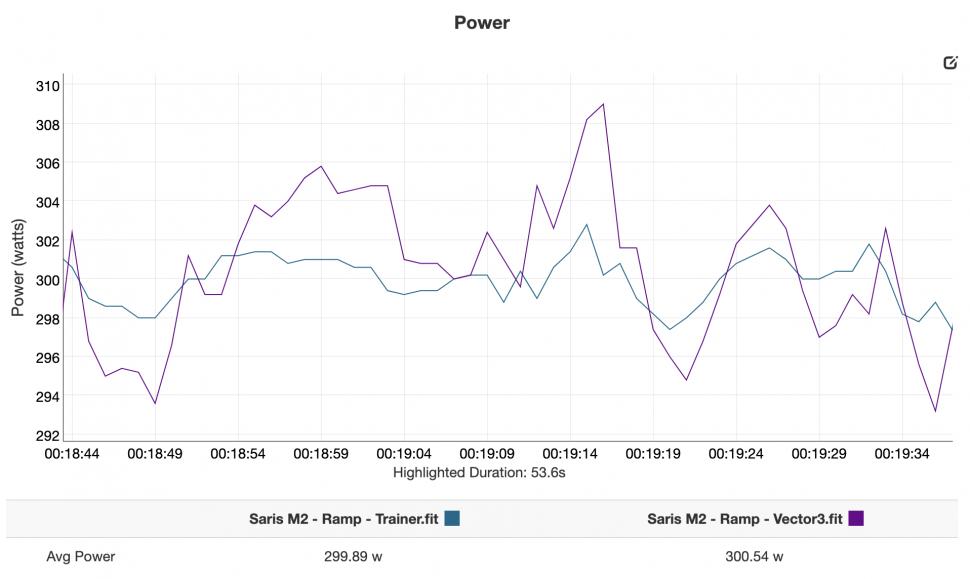






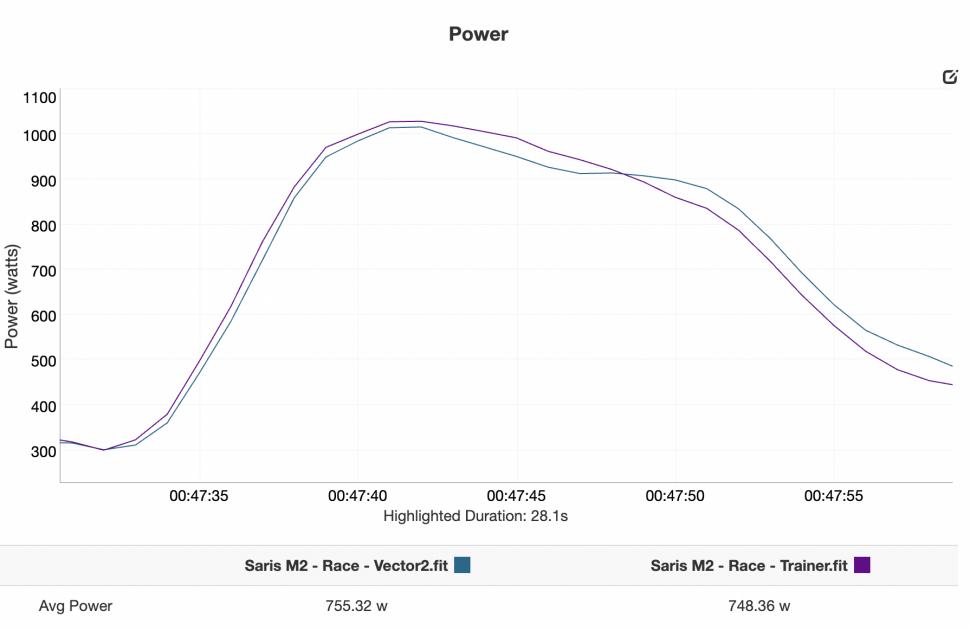

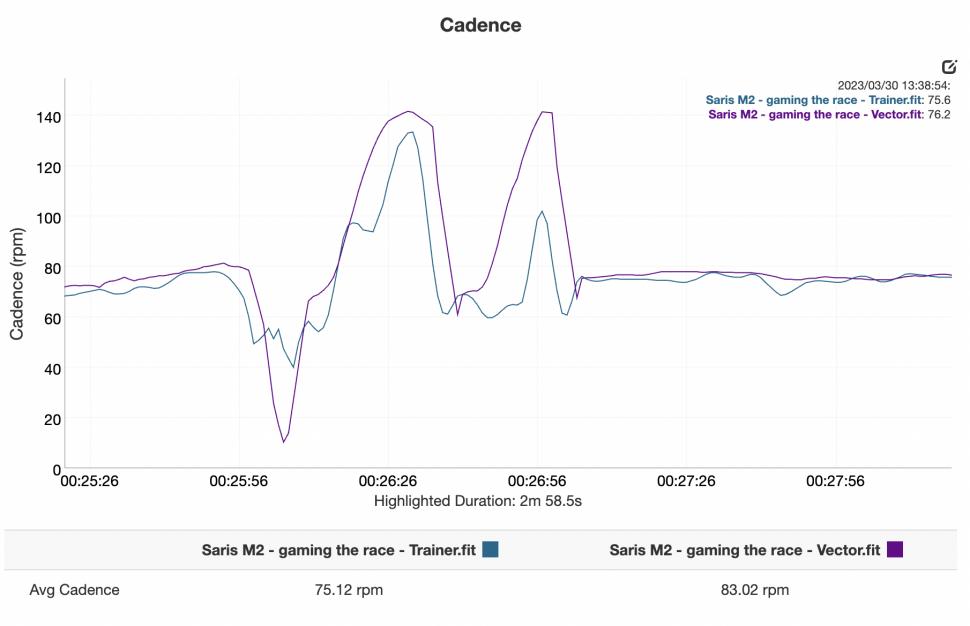
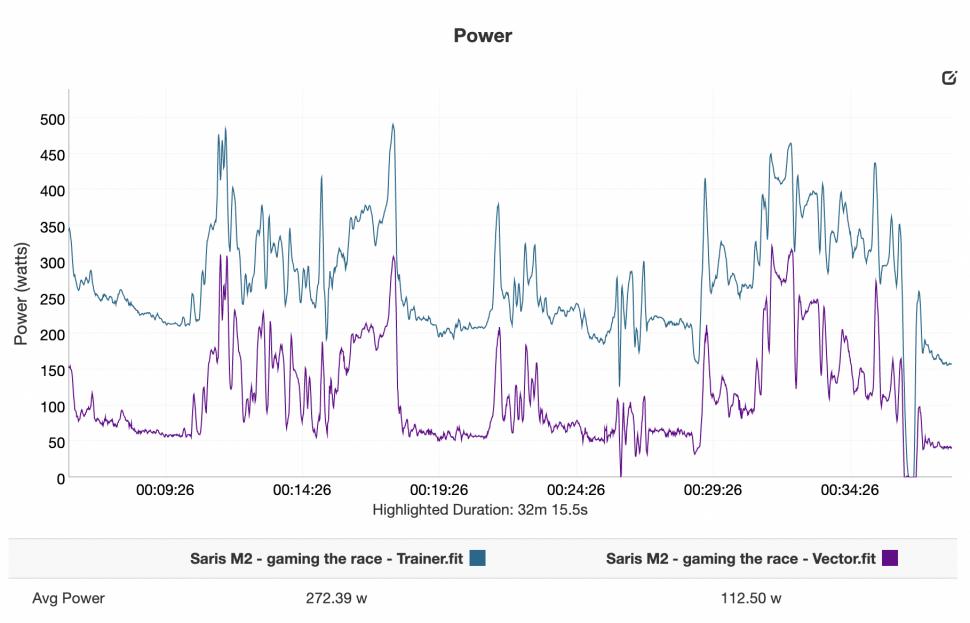
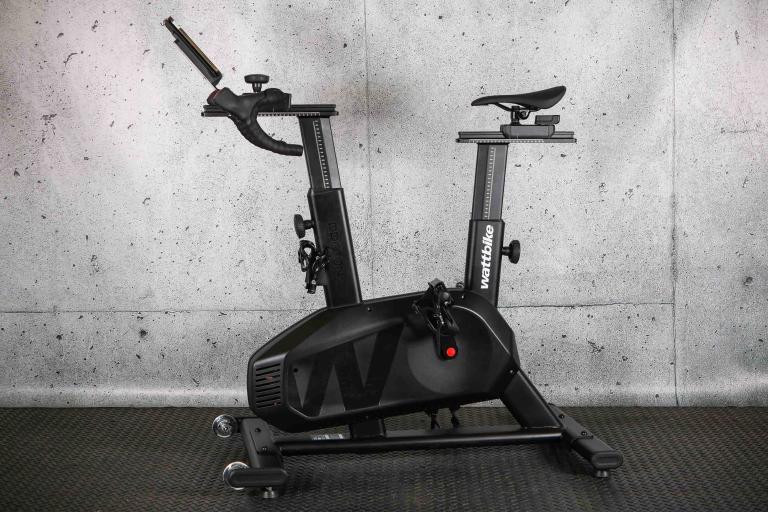
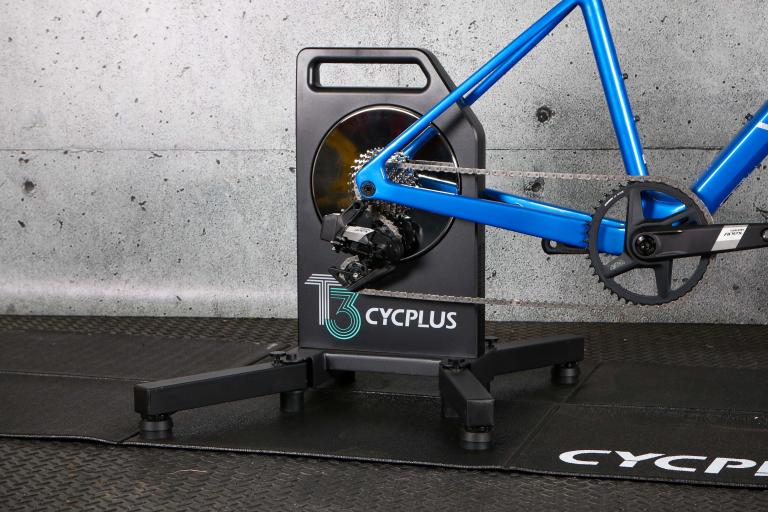
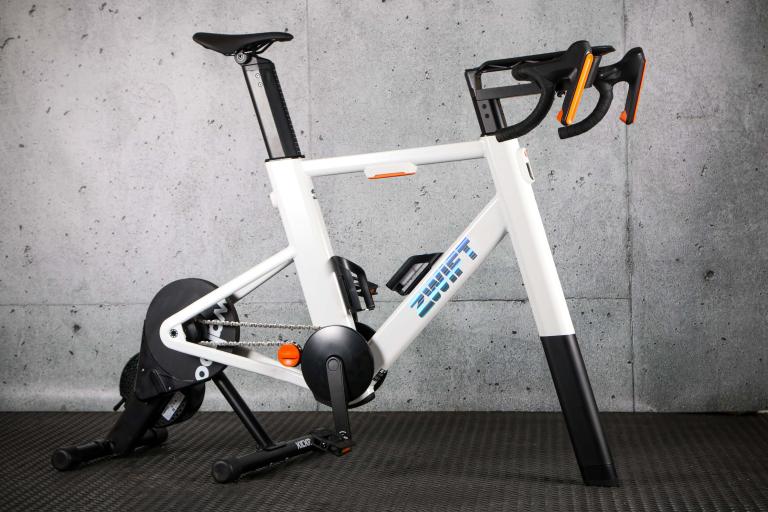

Local to me: 3 injured after multi-vehicle crash in Downtown Peoria....
Anodizing the aluminium is also for corrosion resistance and therefore enhances the longevity of the rims while this is not really a case for...
Wheelsmith has always been very good for me. Malcolm was always very opinionated so I got bored with him telling me I should be riding tubeless,...
I assume you can carry an e-bike battery on the tube if you leave the bike at home. ...
I love it - it's a roundabout with a sculpture of a roundabout on its desk!
From the position of the cyclist when the video starts and the position of the bike later, it looks highly unlikely that the cyclist went "into the...
To rhyme with design. I wondered this myself so looked it up a while ago, according to the founder Micki Kozuschek he and his team had a few...
It's not being pedantic at all, careless driving is successfully prosecuted (and I have been in court more than once when a driver has been...
It's hopefully an urban myth but I heard it was designed that way on purpose, so the cyclepath captured any flooding and the busway would remain clear
I should imagine eating chopsticks anywhere could be potentially rather perilous.